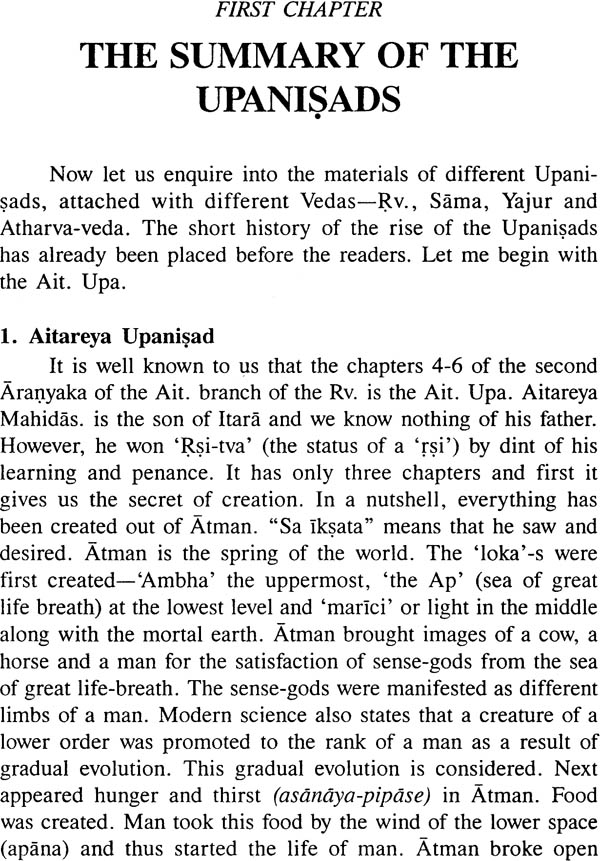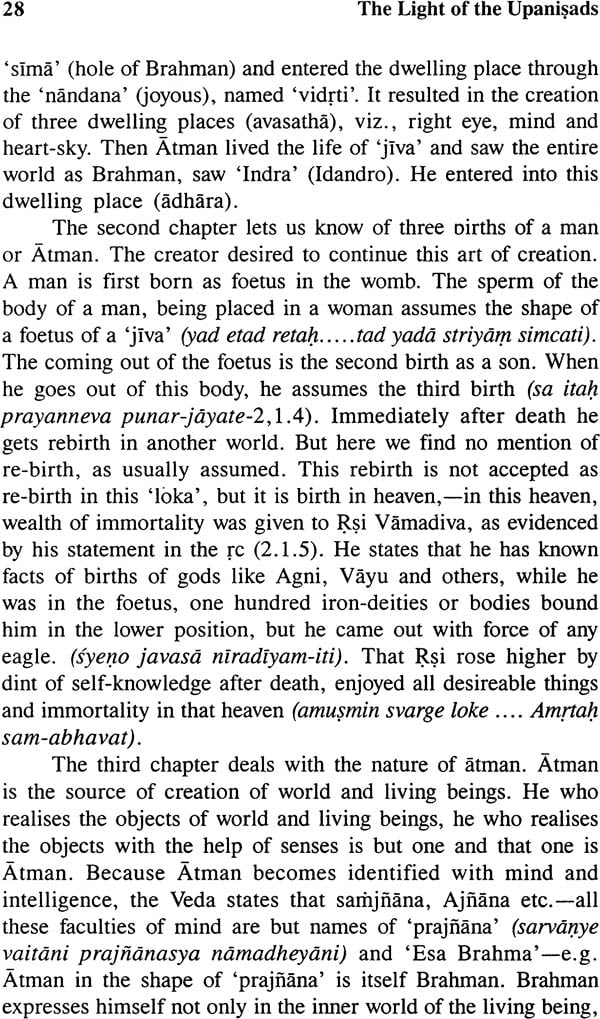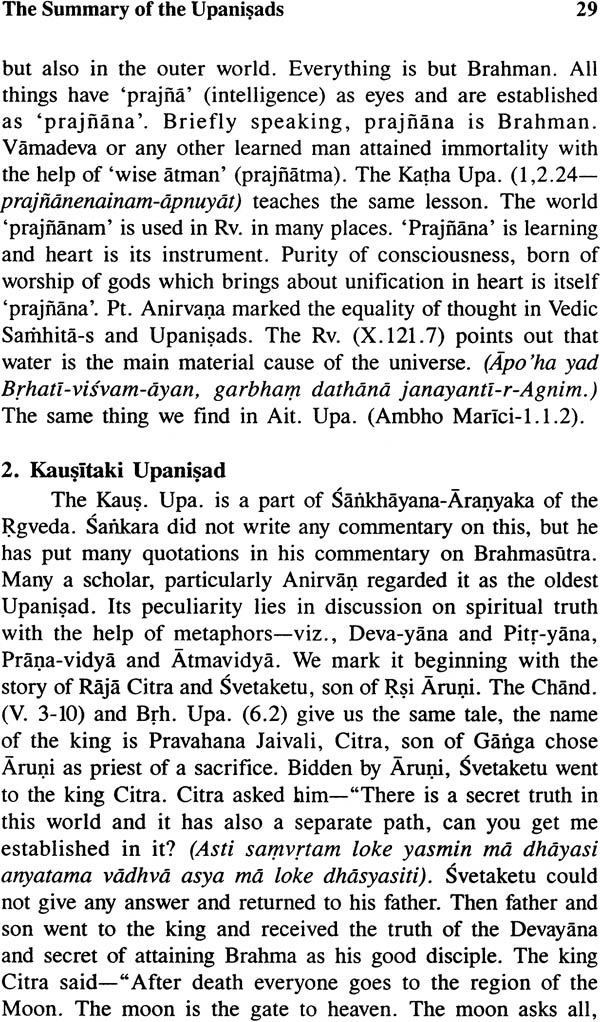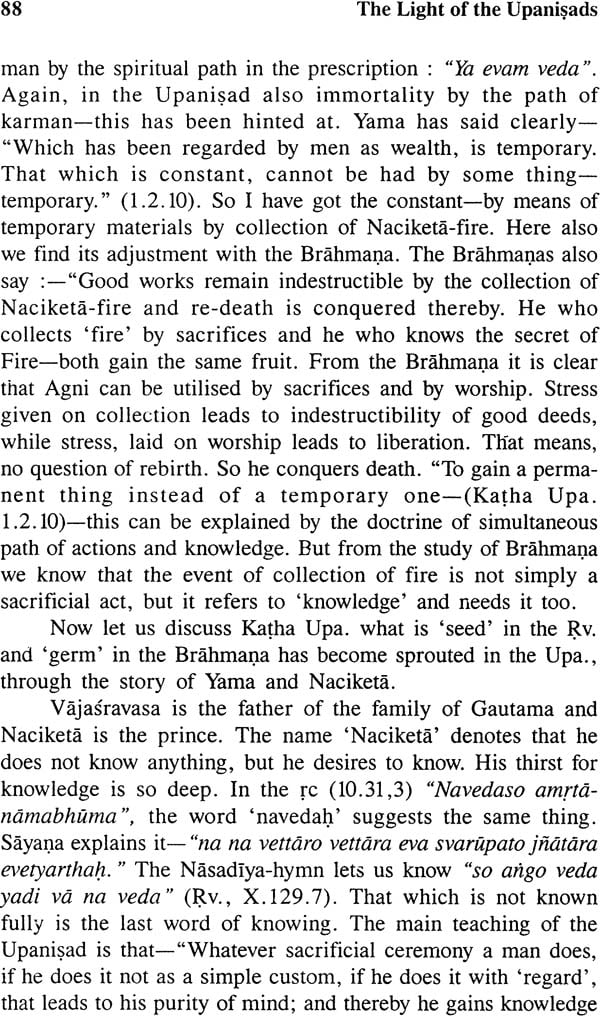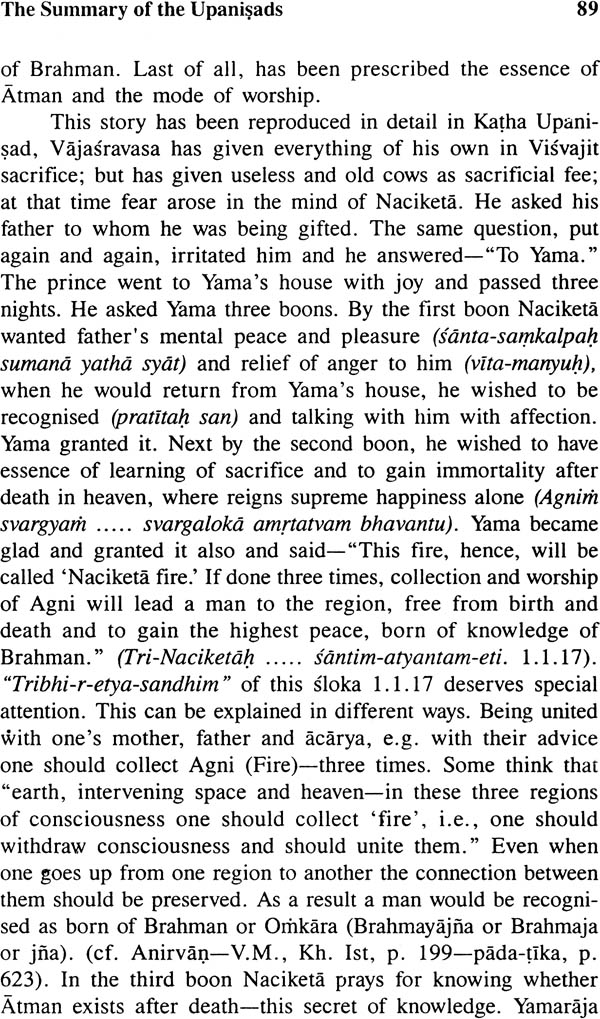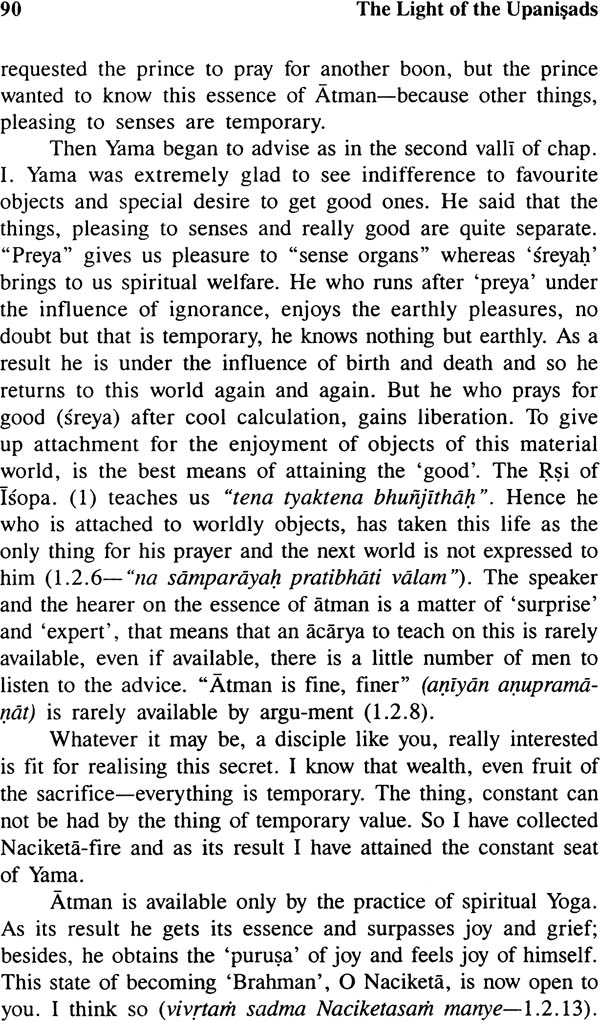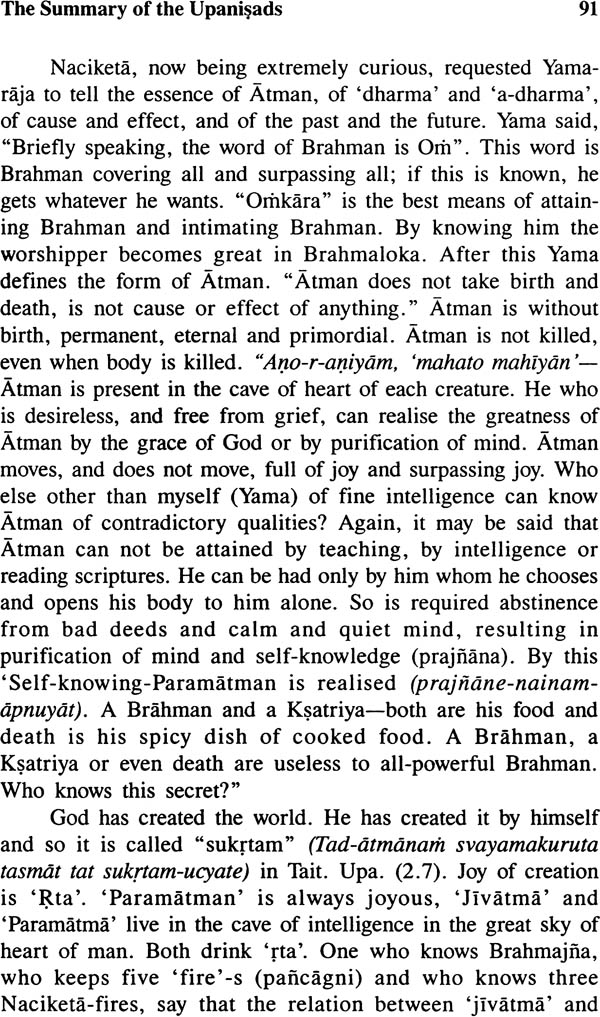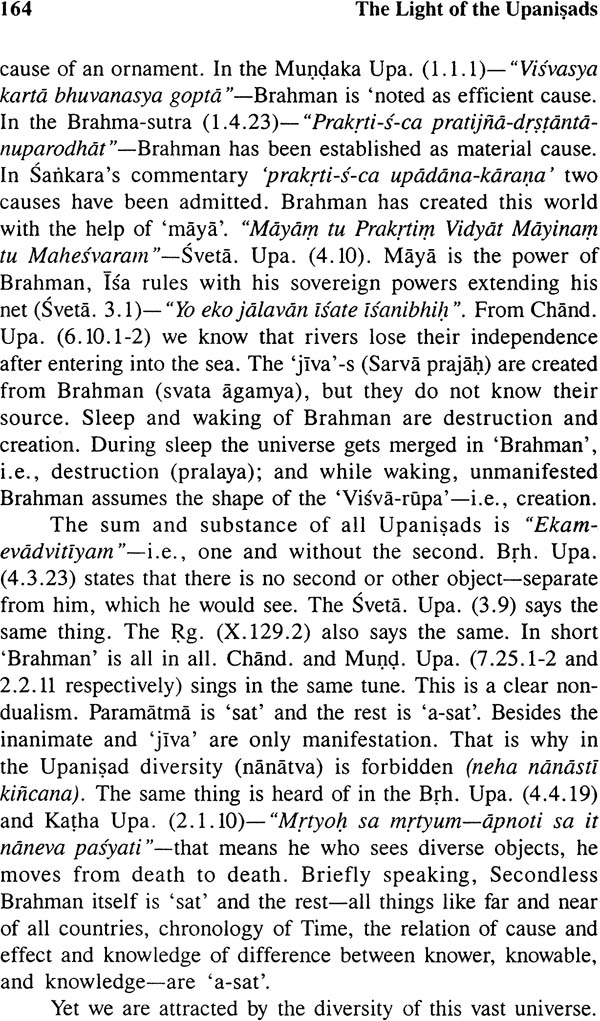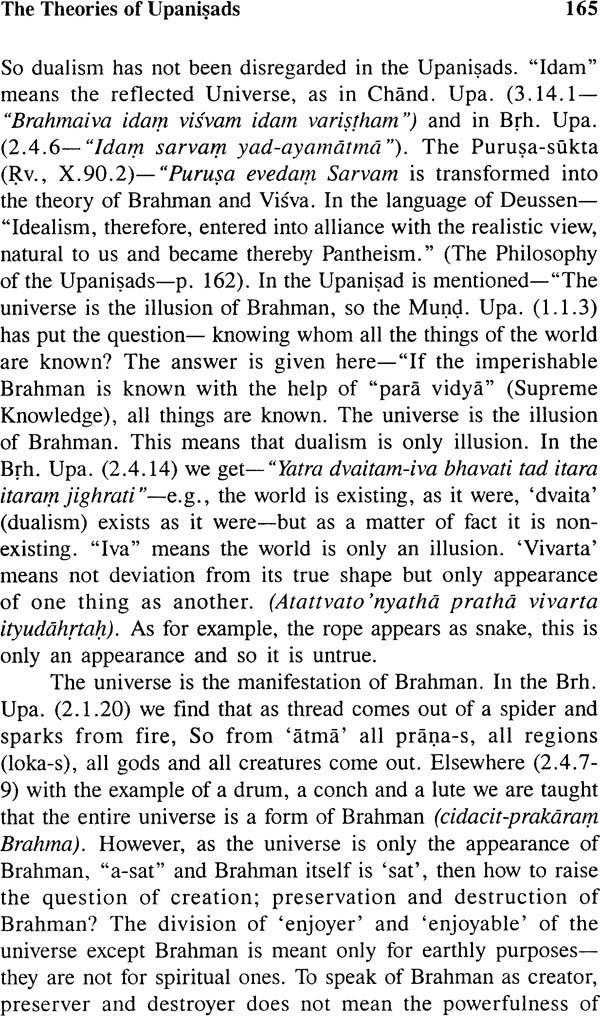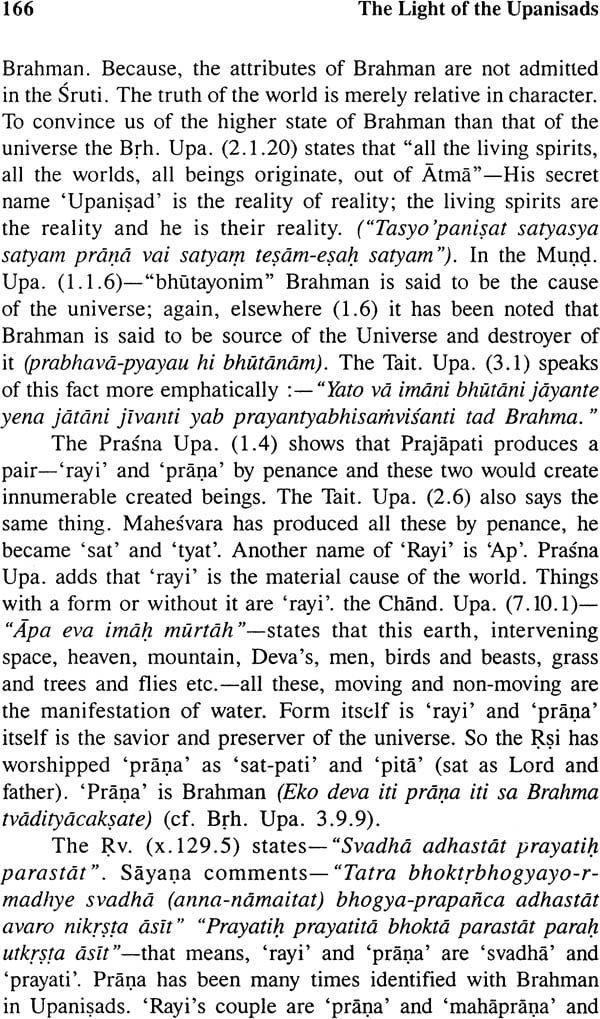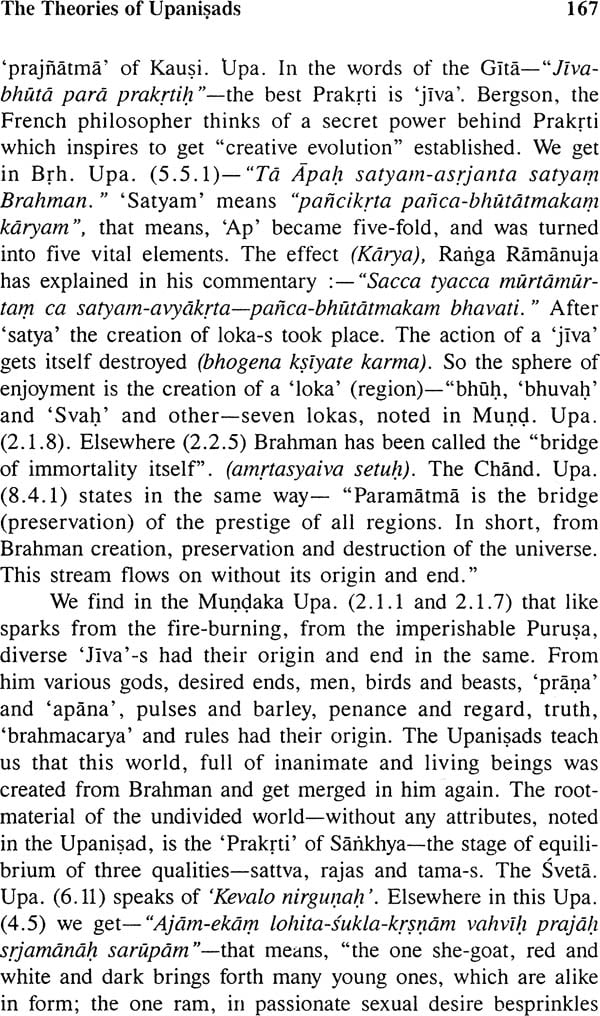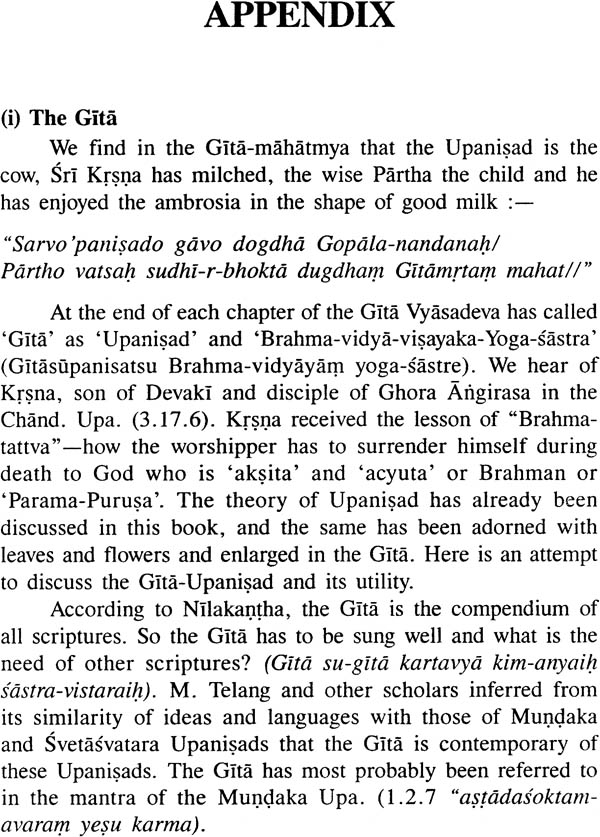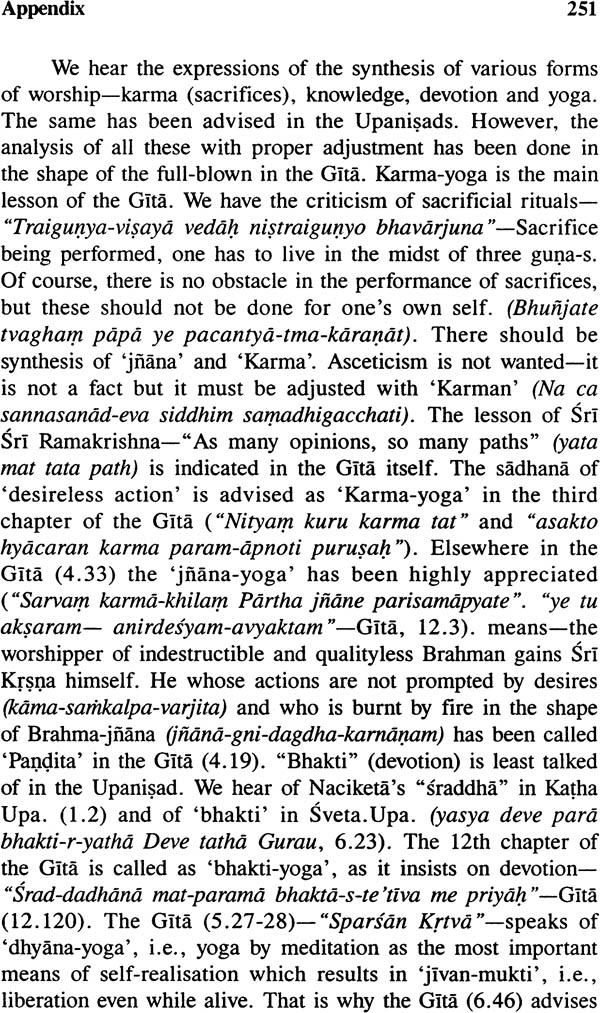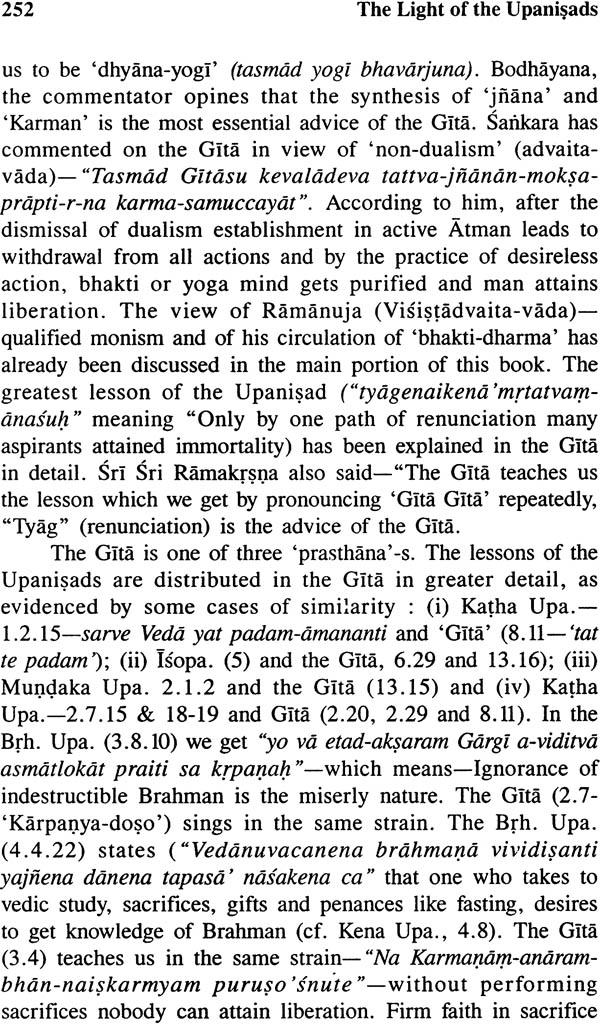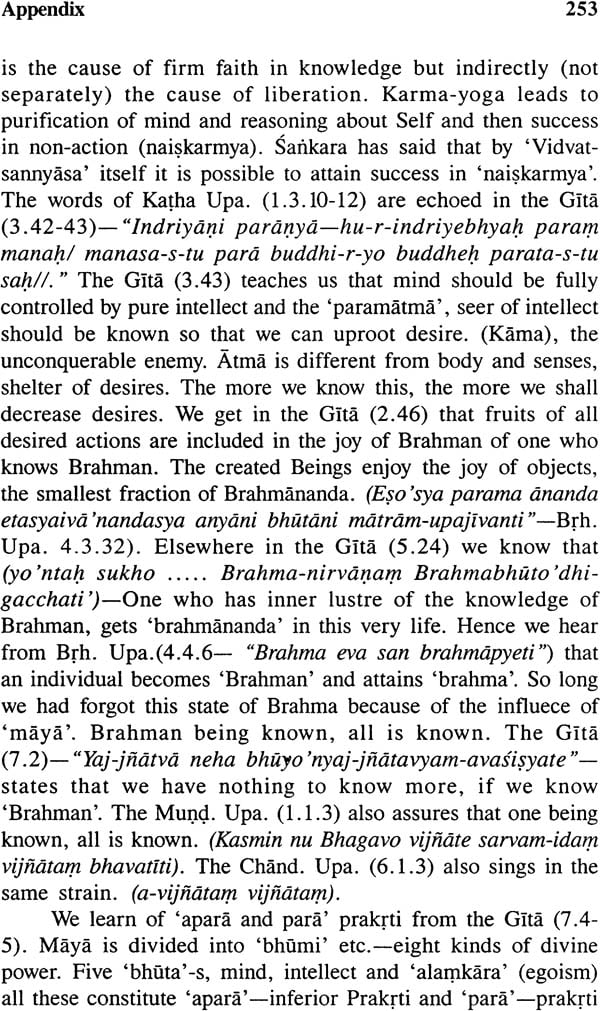
The Light of The Upanisads
Book Specification
| Item Code: | NAL955 |
| Author: | Dr. Haripada Chakraborti |
| Publisher: | Sharada Publishing House |
| Language: | English |
| Edition: | 2003 |
| ISBN: | 8185616930 |
| Pages: | 288 |
| Cover: | Hardcover |
| Other Details | 8.5 inch X 5.5 inch |
| Weight | 540 gm |
Book Description
Swami Vivekananda said “The Upanisads are the religious treatises of the highest importance and their place may be compared with that of the New Testamnet in the Christian world…. and the Veda could be said to be the oldest Indo-European literary monument. Because of its antiquity the Veda stants at the head of Indian literature and hence no one who was not gained an insight into the Vedic Literature can understand the spiritual value and culture of the Vedic people”. The present book is an attempt to present a brief outline of twelve Upanisads which contain many hidden treasure, so long transmitted from the Rsis to Gurus and from gurus to their disciples, and is sure to be a comprehensive reference tool for the scholars in Upanisadic and Vedic studies. The author has also tried to trace the history of Vedic literature- Samhitas, Brahmans and Upanisads in the introduction of the book.
Dr. H.P Chakrabortiis the retired Adhyapaka and Head of the Department of Ancient Indian History and Culture, Visvabharti University, Santiniketan. Earlier he worked as a senior lecturer of the subject in a number of colleges and for some time became the Principle of the B.C. College, Rishra, West Bengal.
He contributed a large number of research papers and articles in various journals. Among his published monographs mention may be made of: Trade and Commerce of Ancient India (200 B.C TO 650 A.D.); A Critical study of Asceticism in Ancient India; India as reflected in the Inscriptions of the Gupta period; Political and Legal Institutions in Vedic Literature; Socio- Economic Life of Indian in the Vedic Period; Criminal justice in Ancients India and Hindu Inter-caste Marriages in India (Ancient and Modern).
Here is an attempt to present a brief outline of twelve older Upanisads which contain many hidden treasure, so long transmitted from the Rsis to Gurus and from Gurus to their disciples. In the introduction I have tried to trace the history of Vedic literature- Samhitas, Brahmans and Upanisads. It is interesting to note that the ultimate Truth of the Upanisads, i.e., Brahman is to be realised under the guidance of an efficient Guru and What is need most is the sincere ‘Sadhna’ to obtain the divine grace of the Supreme Lord.
Now ‘the world is too much with us’ and we are tired with the modern style of life with practically cold war prevalling almost everywhere and with fear to total annihilation. Even the western world is now more interested in spiritual sadhana and to have devoted themselves to the research and realization of truth underlying Brahman.
Let me acknowledge my indebtedness to scholars like Anirvana, Keith, Winternitz, Radhakrishnan, etc.
I shall take my labour amply rewarded if this book is widely read and appreciated and if it can help us to live a life of love and good will and boring down an era of peace and harmony. Let me pay thanks to Sri SantanuGhosal and Sri BarunChattaraj for their help in the task of proof-reading . Let me pay my sincere thanks to the publisher- Mr. B.L. Bansal for his keen interest in the publication of this book.
Let us begin with the remark of Swami Vivekanand: “The Upanisads are the religious treatises of the highest importance and their place may be compared with that of the new testament in the Christian world……. The Upanisads is not the tale of any Rsi or Acarya; but it deals with the easence of Atman. The Sutras of the Upanisads are but the briefest description of the discussion in the religious meetings of Rsis, held by kings. The meaning of the term ‘Upanisad’ is sitting near the Acarya, (Swami VivekanandVani and Racana-8thKhanda, 1.417). The Veda may be said to be the oldest IndoEuropean literary monument. Because of its antiquity the Veda stands at the head of Indian literature and hence no one who has not gained an insight into the Vedic literature, can understand the spiritual value and culture of the Vedic people.
The word ‘Veda’ means the sacred, the religious knowledge and the vedic literature consists of three different classes of literary works- known as (i) Samhitas, collection of hymns and prayers and sacrificial formulas,(ii) Brahmanas-voluminous prose texts on theological matter- mainly observations on sacrifices, showing value of sacrificial rites and ceremonies and (iii) Aranyakas (forest-text) and Upanisads (secret doctrines), partly included in the Brahmanas and partly counted as independent works. The Aranyakas are the products of meditation of the forest-hermits and ascetics on God, would and mankind and the Upanisads are but the ripe fruits of oldest Indian philosophy. The Samhita-s are again collections, knownas (i) Rgveda-samhita i.e. knowledge and songs of praise(rcs), (ii) Atharvam-Veda-samhita, knowledge of the Atharvan (magic formulas), (iii) The Samaveda-samhita, i.e. knowledge of the melodies (saman)and (iv) Yajurveda-samhita i.e., collection of “the knowledge of the sacrificial formulas (yajumsi). These are two diverging texts, viz.-Block Yajurveda- the most important of which are the Taittiriyasamhita and Maitrayanisamhita and While Yajurveda, Known as Vajasaneyisamhita.
There are not only samhitas but also Brahmans, Aranyakas and Upanisads of each samhita but also Brahmanabelogs to the Rg-veda, the SatapathaBrahmana to the White Yajurveda and ChandogyaUpa. to the Samaveda and so on. The Samhitas mean the collection of mantras (prayers of hymns) and the Brahmanas give us explanation of the process of sacrifices and rules of application and so they constitute the Karma-Kanda of the Vedas. (Mantra-brahmanayo-r-veda-namadheyam). The next step is the Jnana-kanda of the Vedas, that gives us the light of philosophy, essence of the spiritual knowledge, the special feature of Hindu religious or culture. Upanisad means the secret knowledge of ancient Indian spiritualism which the student or disciple accepted sitting so near the Guru. Upa+ni+sad+ is the derivation of the word ‘Upanisad’ and European scholars accepted it as the secret knowledge of the disciples, seated near their Guru. Oldenberg took it is as “Upansana” and Deussen opined in favor of secret knowledge.
Sankara means by “upa” nearness, certainly by ‘ni’ and by ‘sad’ looseness, movement and ddectruction. Thus ‘Upanisad’ means such a secret knowledge which loosens wordly desires and destroys attachment to wordlyobjcts and ultimately it leads us definitely to Brahman or Atma. “Upasidandrastabhavatisrotabhavati” (ChandogyaUpa. 7.81) shows that the term “upasidan” means to go so near to the Guru and it is reasonable to explain it as ‘practising repeatedly by the habit of extracting the essence out of it. “Upanisad” means the secret knowledge (nigudha-tattva)as referred to in Rv, 1.3.7, SB (10.3.5.12,10,5.1,1 and 12.2.2.23) and Ait. Aran (3.1.1 and 3.2.5). The remark of Anirvana (Veda – Mimamsa – 1st Khanda, Sanskrit College, Ca;cutta, 1975, pp. 114 – 115) is remarkable indeed-“All things considered, the Upanisad aims at not man but at God as well. “ The God lakes the seat in the heart of Acarya and the knowledge par excellence in him is what is Upanisad. From the commentary of Sankara we learn the importance of the Upanisad, in as much as th Upanisad destroys ignorance (avidya).
The Ait. Brah. (1.23) mentions a ritual called ‘Upasat’ by mans of which the gods broke down three forts of Asura-s. The Mundaka Upa. (so’ vidya-granthim vikiratiha saumya) assures us that the highest Pursa, realized, destroys the knot of ‘avidya’ and then confirms the opinion of Sankara.
In the subsequent period Krsna is said to have gifted us the condensed milk of the Gita, a marvelous work with cream of the Upanisad, as a help to determine goal of life :-
“Sarvo’ panisado gavo dogha Gopala-nansanah/,
Partho vatsah vatsah sudhi-r-thokta dugham Gitamrtam mahat//.”
The Veda is regarded as ‘a-paureseya’. And ‘nitya’-not as a work made by any man but as a work, heard and transmitted (sruti) from the Guru to his disciple. The Rgveda gives us some philosophical theories on like after death. The rc (X, 16.1-6) gives us some idea about the ceremony of cremation. After the funeral pile is erected, the corpse is laid upon it and the fire is lighted. The preiests pray to Agni not to burn him up. “Let not his body or skin be scattered.” Here from the philosophical hymns we get the idea of Vedic Aryans about the universe and creation and also the great pantheistic idea of the absolute soul, one with the universe. The Rv. (II.12) speaks of the might of Indra. Even in the refrain-“He, O men, is Indra, we find the doubt of some people” about Indra\’s The Rgvedic people thought of the origin of the world and of the state before creation as “darkness shrouded in darkness these philosophical hymns think of the creator as Prajapati, Brahmanaspati or Brhaspati or sometimes as Vivakarma. The creative principle is given in the name of ‘one’-the idea of universal unity. The Rv. (I.164.46)-
“Indram Mitram Varunam-ahuh/…../
Ekam sadvipra vahudha vadanti/
Agnim-yamam-Matarisvanam-ahuh.//”
Leads us to believe that the only reality is one and only one and all plurality is only imaginary.
| Preface | (ix) | |
| Abbreviations | (x) | |
| Introduction | 1-26 | |
| Samhita, Brahmana and Upanisads | ||
| Chapter 1 | Summary of the Upanisads | 27-158 |
| 1 | Aitareya Upanisad | 27 |
| 2 | Kausitaki Upanisad | 29 |
| 3 | Kena Upanisad | 34 |
| 4 | Chadogya Upanisad | 37 |
| 5 | Taittiriya Upanisad | 74 |
| 6 | Katha Upanisad | 84 |
| 7 | Svetasvatara Upanisad | 97 |
| 8 | Iso Panisad | 106 |
| 9 | Brhadaranyaka Upanisad | 115 |
| 10 | Prasna Upanisad | 143 |
| 11 | Mundaka Upanisad | 149 |
| 12 | Mandukya Upanisad | 155 |
| Chapter II | The Light of the Upanisads | 159-249 |
| i | Theory of Creation | 159 |
| ii | Sarira and Atma | 174 |
| iii | Theory of Sorrow | 191 |
| iv | Niti Bogh | 195 |
| v | Upasana (Worship) | 205 |
| vi | Intelligence and inner vision | 207 |
| VII | Karma-Tattva | 208 |
| viii | Psychology in Upanisads | 211 |
| ix | Seed of Samkhya system | 213 |
| x | The PHILOSOPHY OF Upanisads | 220 |
| xi | Cobclution | 238 |
| xii | Relevance of Upanisad at present | 245 |
| Appendix | 250-266 | |
| i | On the Gita | 250 |
| ii | Theory of Incarnation | 256 |
| iii | Sikhism | 262 |
| Bibliography | 267-269 | |
| Index | 270-278 |
